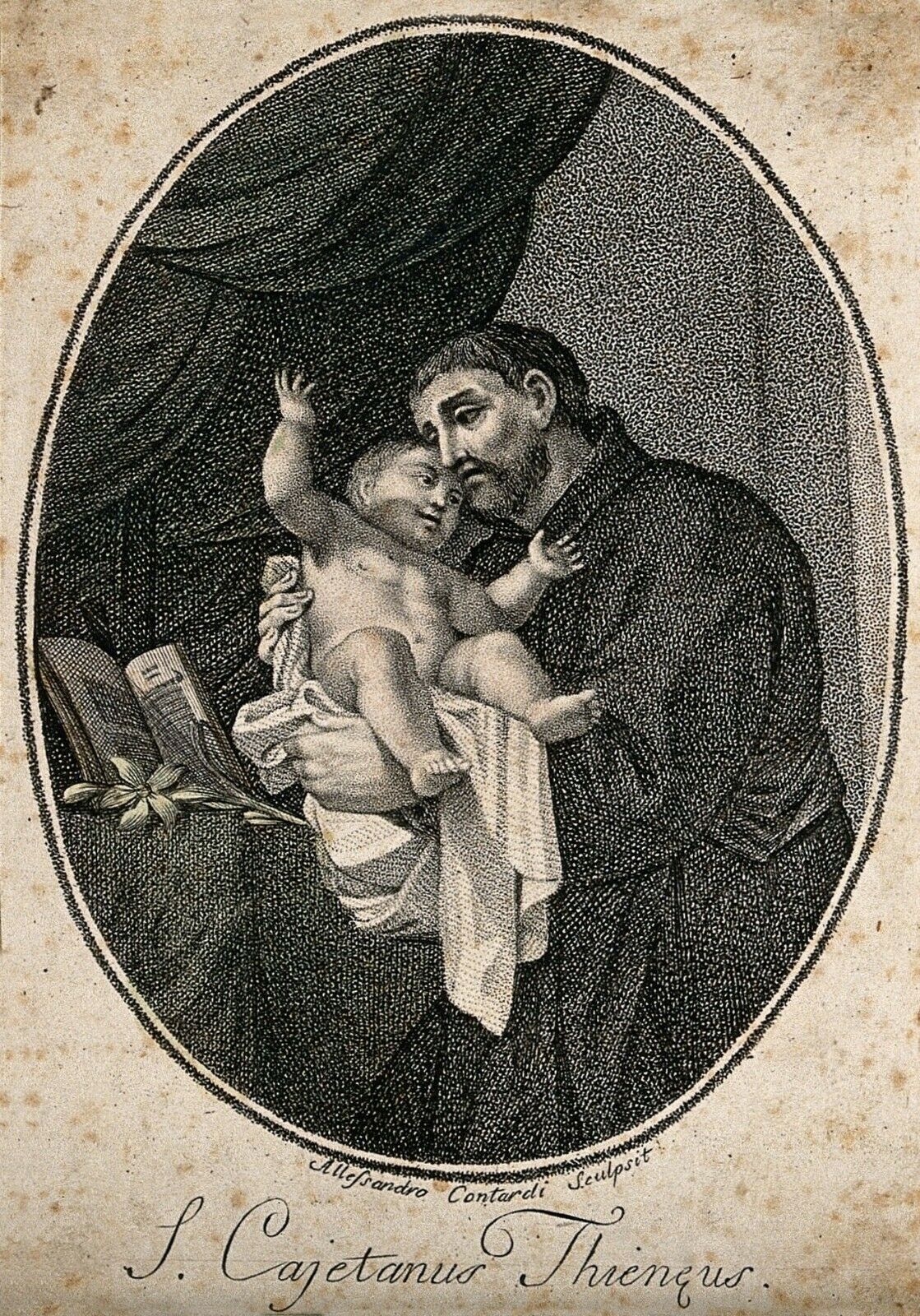-40%
Holy Card of Saint Gaetano or Cajetano or Cajetan Plus a Medal of St. Gaetan 1"
$ 2.37
- Description
- Size Guide
Description
Laminated Holy Card of Saint Gaetano or Cajetan Plus a Miraculous Medal 1". Condition is New. Shipped with USPS First Class Package.This exceptionally detailed die-cast medal, with St Cayetano on the front and PRAY FOR US on the back, is made in the region of Italy that produces the finest quality medals in the world. The silver oxidized finish is has been perfected for hundreds of years by the local Italian craftsmen, and remains unmatched in quality, beauty, and longevity throughout the world -a genuine silver plating with a 3-dimensional depth, and long-lasting brilliance. Measures approximately 1 inch in height - attached jump ring is included.
Saint Gaetano dei Conti di Thiene, known as Saint Cajetan, was an Italian Catholic priest and religious reformer, co-founder of the Theatines. He is recognised as a saint in the Catholic Church, and his feast day is 7 August.
St. Cajetan was born in October 1480, the son of Gaspar, lord of Thiene, and Mary Porta,persons of the first rank among the nobility of the territory of Vicenza, in Veneto Region.
His father died when he was two years of age. Quiet and retiring by nature, he was predisposed to piety by his mother. Cajetan studied law in Padua, receiving his degree asdoctor utriusque juris (i.e., in civil and canon law) at age 24. In 1506 he worked as a diplomat for Pope Julius II, with whom he helped reconcile the Republic of Venice. But he was not ordained a priest until the year 1516.
With the death of Pope Julius II in 1513, Cajetan withdrew from the papal court. Recalled to Vicenza by the death of his mother, he founded in 1522 a hospital for incurables there. By 1523 he had established a hospital in Venice, as well. His interests were as much or more devoted to spiritual healing than the
physical kind
, and he joined a confraternity in Rome called the "Oratory of
Divine Love
". He intended to form a group that would combine the spirit
of monasticism
with the exercises of the active ministry.
A new congregation was canonically erected by Pope Clement VII in the year 1524. Oneof his four companions was Giovanni Pietro Carafa, the Bishop of Chieti,elected first superior of the order, who later became pope as Paul IV. From
the name
of the city of Chieti, arose the name by which the order is known, the"Theatines". The order grew at a fairly slow pace: there were
only twelve
Theatines during the sack of Rome in 1527, during which Cajetan
was tortured
by the Spanish soldiers of Charles V who had mutinied. The Theatines
managed to
escape to Venice.
There Cajetan
met Jerome Emiliani, whom he assisted in the establishment of his Congregation of Clerks Regular. In 1533 he founded a house in Naples. The year 1540 found him in Venice again and from there he extended his work to Verona.[3] He founded a bank to help the poor and offer an alternative to usurers (who charged high interest rates). It later became the Banco di Napoli.
Cajetan died in Naples on 7 August 1547. His remains are in the church of San Paolo Maggiore in Naples; outside the church is Piazza San Gaetano, with a statue.











